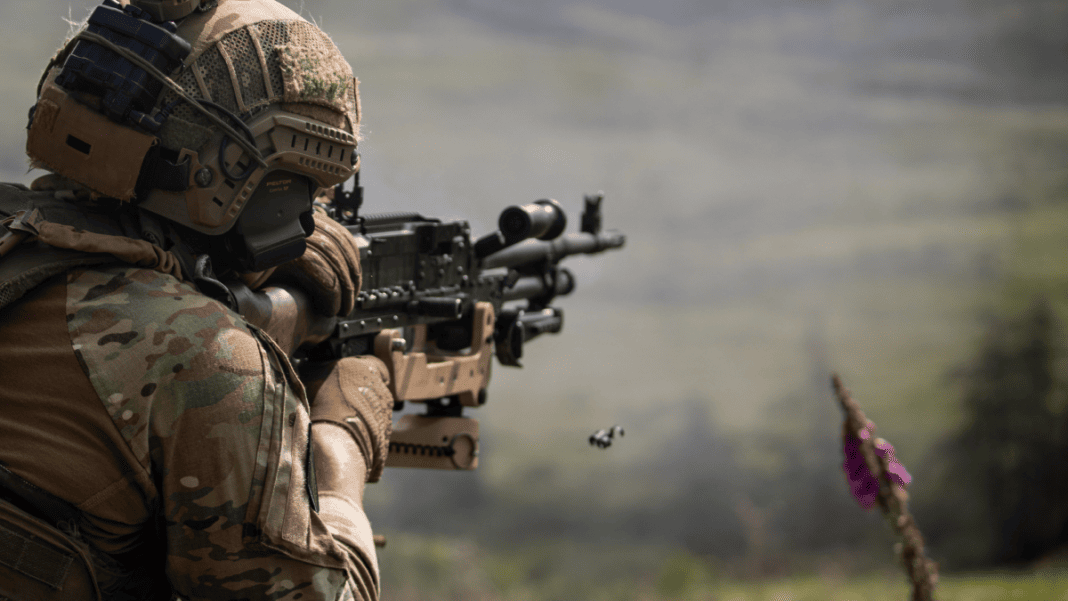The Irish Army Ranger Wing is a highly specialised Special Operations Force. Skilled in unconventional warfare, the ARW supports a large range of counterterrorism operations.
1.0. History
1.1. The Early Days
The Irish Army Ranger Wing (ARW) was formally established in March 1980, though the organisation’s roots can be traced back to the 1960s. Irish army strategy underwent significant change throughout the 1960s, with international terrorist attacks highlighting the need for specialised and covert forces.
In 1968, a small group of elite army personnel were selected to devise and hold Special Operations Forces training. In these early years of the Irish Special Operations forces, operatives were also sent to training courses in the US and England to help inform the syllabus of the future Special Operations training regime. Ultimately, the personnel completed the design of the training course in 1969.
1.2. The 1970s: The Transition Years
The rigorous training course comprised of 18-hour days of intense physical and mental testing, was rolled out and continued throughout the 1970s. These courses called ‘Ranger Courses’, were taken by only selected elite units within the Irish army. At this time, specialist operations, such as counterterrorism and counterintelligence were not centralised in one force; selected personnel across the Irish Defence Force undertook training so that there were agile and highly trained troops throughout the entire force.
The importance of such specialised forces in Ireland was clear: The Troubles were escalating throughout the mid and late 1970s, with insurgent groups regularly undertaking bombings, kidnappings, and murders. As a result, the Irish Army Ranger Wing was approved by the Department of Defence in 1979. As such, the Army Ranger Wing (Irish: “Sciathán Fianóglach an Airm”) was officially established in March of 1980.
1.3. The 1980s and Beyond
The first instructors of the ARW in the 1980s had trained and served extensively in the decades prior. Many of these instructors had undergone Ranger training throughout the 70s, which largely informed the new ARW syllabus. Ultimately, the first training course ended in 1981, and the ARW began its first counterterrorism operations by the mid-1980s.
From its formation until the late 1990s, the ARW was mainly tasked with assisting in the Troubles, undertaking reconnaissance and counter-terrorism operations with the assistance of the Irish Police Force (Garda Síochána).
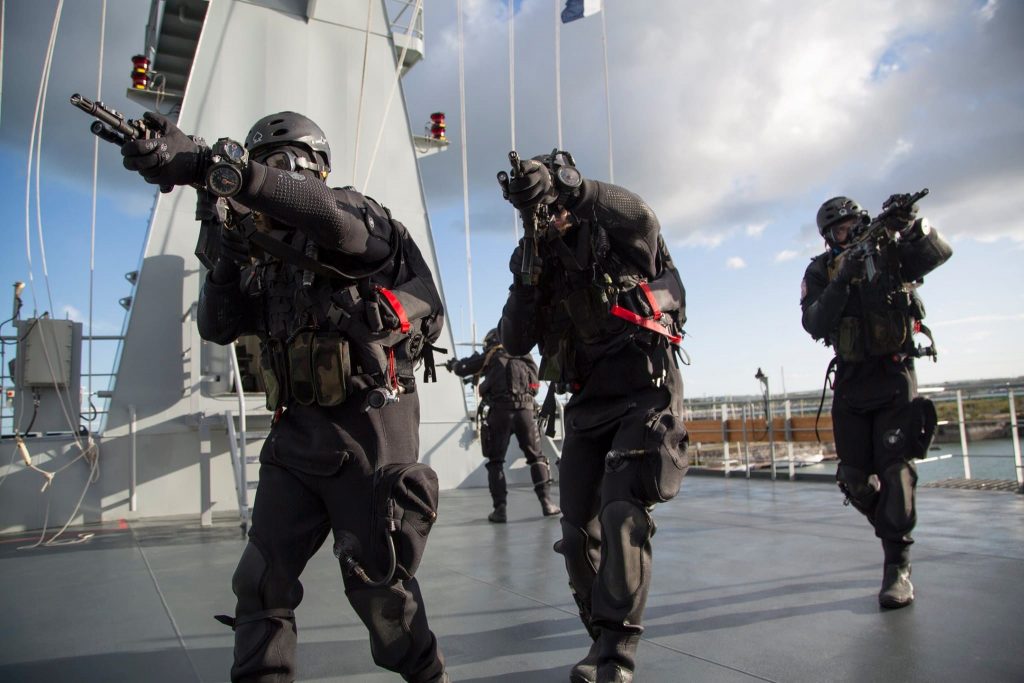
2.0. Doctrine and Organisation
2.1. Strategy
The ethos of the ARW is to have ‘a high level of preparedness to deal with any requests for operations of a specific nature’ [source]. Although vague, this means that the unit must be ready to deal with a variety of hybrid threats with little notice. For this reason, the ARW is on call 24/7, every day of the year [source].
2.2. Organisation
The Irish Army Ranger Wing is the Special Operations Force of the Irish Army. Therefore, the unit falls operationally underneath the Irish Army, and therefore the Irish Defence Forces. However, the unit runs semi-autonomously reporting directly to the Chief of Staff at the Defence Forces HQ. Similarly, the ARW is designated as a Military Aid to Civil Power. Therefore, the Irish Army Ranger Wing also accepts assignments directly from civil offices, most commonly the Irish Police Force (Garda Síochána).
Whilst the exact operational structure of the ARW itself is classified, it is believed that the force is comprised of smaller units focussed on specialised skills.
2.3 The Agreement with NATO
Ireland has recently entered into a new agreement with NATO through the Individually Tailored Partnership Programme (ITPP), marking a significant step in enhancing cooperation aimed at countering potential threats, particularly those related to undersea infrastructure.
This agreement, highlighted by enhanced collaboration in areas such as cyber threats and the protection of subsea infrastructure, comes against the backdrop of increasing concerns over threats from aggressive nations, notably Russia. The initiative underscores Ireland’s commitment to bolstering its national security framework while maintaining its stance on military neutrality [source]. Moreover, the collaboration could facilitate protecting Ireland’s undersea infrastructure, a critical component of national security given the country’s reliance on such systems for communication and energy transmission. [Source]
For the Irish Army Ranger Wing (ARW), this agreement could have profound implications. This exposure to international standards and practices is expected to significantly enhance the operational capabilities of the ARW, enabling them to deal more effectively with a range of security threats, including terrorism, cyber-attacks, and hybrid warfare.
The specifics of the changes planned for the Army Ranger Wing (ARW) as part of its major restructuring and expansion are both significant and multifaceted. Here are the key aspects of the overhaul that have been reported:
2.3.1 Expansion and Recruitment
The ARW is set to undergo its largest expansion in its 43-year history. This expansion includes the recruitment of new members to bolster the ranks of this elite unit, enhancing its operational capabilities and readiness. In addition, the significant rise in allowances given to the ARW by the Department of Defence will aid recruitment. [Source]
Moreover, the ARW will focus on the recruitment of support personnel, such as drivers, communications specialists and fire support teams. According to NATO standards for every operator, there must be around 3 supporters or enablers [Source].
Furthermore, another significant expansion is the plan for a dedicated ARW headquarters in the Curragh Camp in Kildare, which should be completed by the end of this year [source]. The goal of this major restructuring is also to enhance the number of personnel to over 11,500 by 2028, currently, the number of personnel across all three branches is inferior to 8,000 people.
2.3.2 Name Change
One of the most visible changes will be the renaming of the ARW to the Ireland Special Operations Force (IRL-SOF). This name change reflects the broader scope and enhanced capabilities envisioned for the unit as part of its restructuring. [Source]
2.3.3 Operational Capabilities
While specific details about changes to operational capabilities have not been fully disclosed, the restructuring is expected to include enhancements in equipment, training, and tactics to ensure that the ARW (soon to be IRL-SOF) remains at the forefront of modern special operations forces. This would likely involve the integration of new technologies and methodologies to improve effectiveness in various mission profiles. [Source].
Moreover, the ARW will be split into three different specialised units. The land unit will be known as the the Special Operations Land Task Group (SOLTG), this unit will essentially be the continuation of the ARW unit. This unit will focus mainly on land-based operations that involve reconnaissance and hostage rescue. In addition, a specialised parachuting unit will be created known as the Air Task Group (ATG). The ATG will be stationed in the Air Corps headquarters in Baldonnel and will be used for rapid deployments. The third unit is a maritime unit that will be known as the Maritime Task Group. This unit will focus on ensuring the safety of Irish seas from drug traffickers and other transnational criminals. [Source]
The three units together will be known as the IRL-SOF and they will directly respond to the Directorate of Special Operations. Nonetheless, on the ground, the new ARW will be led by a Lieutenant Colonel, instead of the current commandant. [Source]
2.3.4 Strategic Alignment
The restructuring and expansion of the ARW are also aimed at aligning the unit more closely with international special operations forces standards and practices. This includes fostering greater interoperability with NATO forces, despite Ireland’s policy of military neutrality. Such alignment could facilitate more robust cooperation in international peacekeeping and counter-terrorism operations. [Source]
3.0. Tactics, Techniques, and Procedures (TTP)
3.1. Training
Owing to the nature of the unit’s mission, their training protocols are intense and all-encompassing. The modern ARW selection and training course is incredibly rigorous. However, the ARW Special Operations Force Qualification (SOFQ) is open to all active members across the entire Irish Defence forces. The training runs for over 36 weeks, aimed to test all manner of physical and mental abilities [source]. As a result of such lengthy and challenging selection, attrition rates into the force are incredibly high – reports suggest only 2 new recruits completed the entire training course in 2019 [source]. The entire force is estimated to be around 150 personnel total [source].
Owing to their historic training regimes, ARW troops must be equipped in many methods of unconventional warfare, including:
- Parachuting
- Amphibious assault
- Helicopter fast-roping
- Sniping
- Reconnaissance
- Navigation
- Extensive psychometric testing
On completing three training modules, recruits are awarded the coveted ‘Fianoglach’ tab. On completing the final initiation training module, new ARW troops are officially assigned to a specific unit and given the distinctive ARW green beret [source].
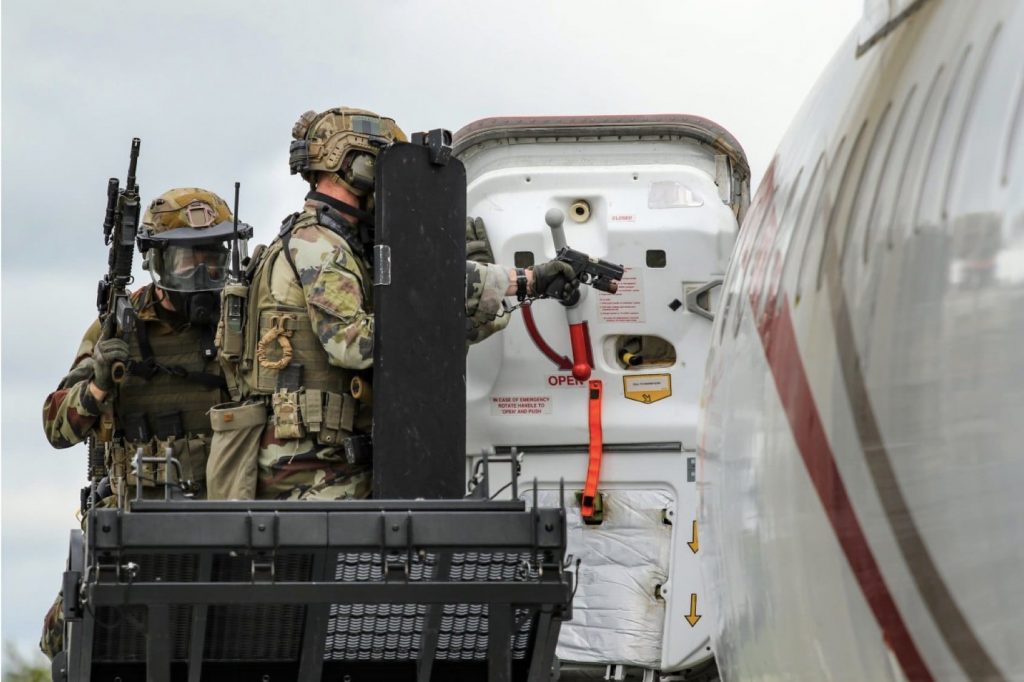
Aside from the initial training, ARW troops undergo significant amounts of ongoing training. This includes specialist training courses, as well as joint drills with other forces from Irish Defence [source].
3.2. Equipment
The ARW, in addition to Irish Army standard issue equipment, are known to use the following weaponry:
3.2.1 Pistols
- SS P226
- SS P228
- HK USPs (various models)
3.2.2 Shotguns, Rifles & Semi-Automatics
- Remington 87
- HK 33/SG1
- HK MP5A3
- Steyr AUG A1
- Steyr AUG A3
3.2.3. Other
- M203 Grenade Launchers
- M1 60mm Commando Mortar
- AT4 Anti-tank weaponry
- Tactical assault vehicles (various models)
- Klepper M13 Canoes
- Drager LAV-7 Underwater Equipment
4.0. Notable Operations
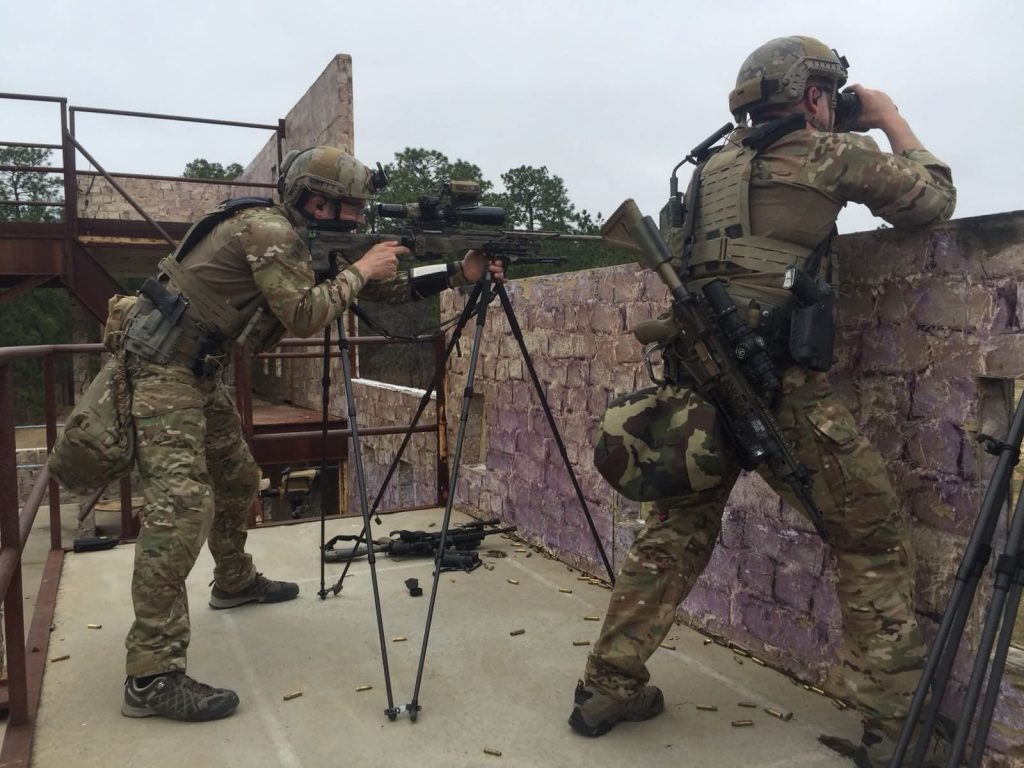
The unit completes multiple functions for the Irish Defence Forces domestically [source]. On an everyday basis, the ARW’s responsibilities include [source]:
- Reconnaissance
- Raids
- Ambushes
- Intelligence collection
- VIP Protection services
- Counterterrorism
- Hostage negotiation
However, the ARW has also been called to action for several high-profile international missions:
4.1. Chad
The ARW, alongside multiple international Special Forces Units, deployed to Chad in 2008. This deployment was under the UN Peacekeeping mission MINURCAT. This mission was aimed at long-range reconnaissance in hostile territory. Whilst the ARW undertook specialist monitoring to assist with Irish Intelligence in the region, the ARW also supported conventional Irish forces in the area. This includes transporting essential supplies across hostile territories and assisting with the extraction of wounded personnel [source]. Ultimately, the ARW withdrew from Chad and the CAR in 2010.
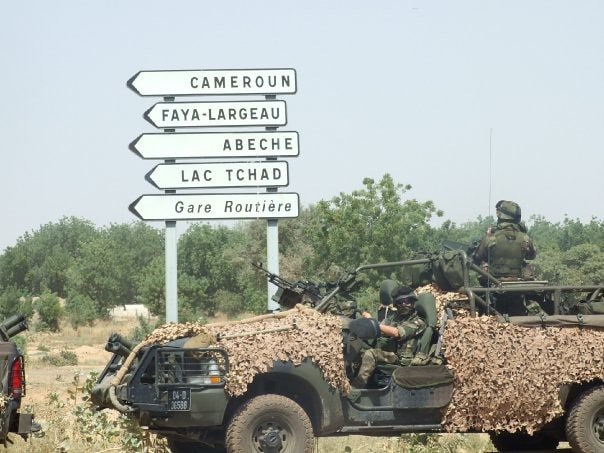

4.2. Mali
In June of 2019, troops from the Army Ranger Wing were sent to Mali as part of the UN Peacekeeping mission MINUSMA [source]. MINUSMA is widely considered to be the UN’s most challenging and dangerous mission due to high casualty rates [source]. As of 2022, Irish Defence Forces are considering extracting the ARW from Mali and deploying the force into the Sahel Region. Reporting suggests that no final decision has been made on this movement, but is due to be made during the year [source].
4.3. Afghanistan
Following the fall of Kabul in August 2021, twelve members of the ARW were deployed to Afghanistan to assist in the evacuation of Irish citizens from the country [source]. The ARW were able to assist with the successful extraction of 26 Irish citizens from Kabul airport [source]. Despite multiple bombings surrounding the airport, Irish forces and civilians sustained no casualties.
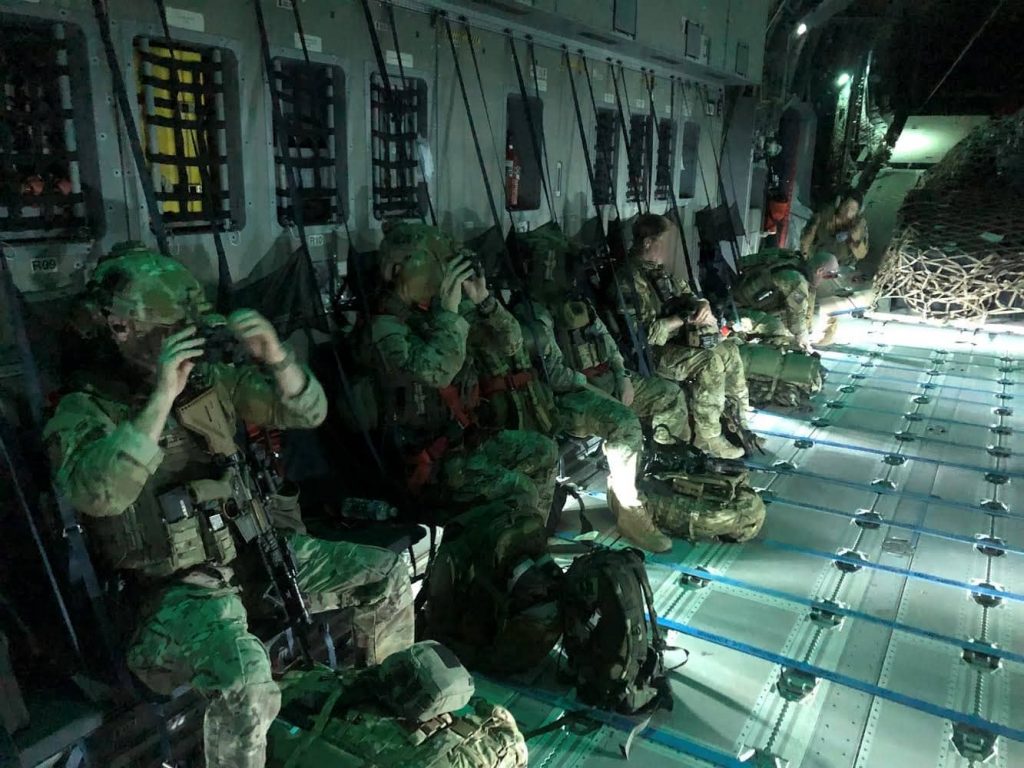
5.0. Summary
The Army Ranger Wing is an elite force with a rich history of unconventional warfare. The ARW is therefore instrumental to Irish domestic and international security.
[Source of note: Shadow Warriors: The Army Ranger Wing, written by Paul O’Brien and Wayne Fitzgerald]
The article was recently updated by Giampaolo Servida. The original version of the article was written by Abbi Clark.

